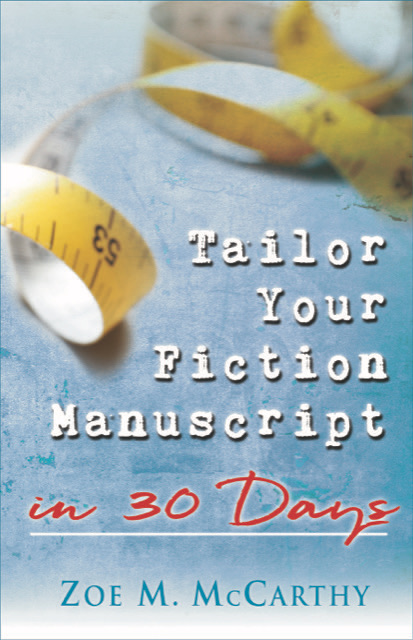

Tailor Your Fiction Manuscript in 30 Days now available. See details below.
I’ll share what I do to keep the writing, marketing, financial, pay-it-forward, and event tasks straight. I hope other authors will share what they do. Now that I have eight books in different stages of publishing, I’d welcome more suggestions.
Tip 1: Make Separate Marketing Mailboxes for Each Book on Email.

Since you’ll use these mailboxes every day, place them at the front of your mailboxes so you’re not constantly scrolling. Put them alphabetically by a title word or title’s initials.
Add sub-mailboxes that work for you. My sub-mailboxes are:
- Ads
- Announcements
- Books in Store (where I keep all my purchased Kindle gift-book emails ready to forward for giveaways, contests, reviews, etc.)
- Contests
- Endorsers
- Events (online and physical)
- Guest Blogs
- Influencers
- Materials (bookmarks, postcards, business cards, posters, etc.)
- Reviews
- Winners
Drag pertinent emails into these mailboxes. When you have a question about what a blogger wants from you as a guest, you can find it quickly in the Guest Blogs emails for that book. Don’t forget to store your sent emails too so you know what you’ve submitted or agreed to.
Tip 2: Keep Logs for Certain Responsibilities.
I agreed to be the treasurer for a state chapter of an international writers’ group to pay forward help I’ve received. I’m responsible for special and yearend reports. So I keep a log in a word processor table (could use a spreadsheet) of each action I perform. Just a brief action, who, and a date. For special, monthly, or yearend reports, I don’t have to remember or hunt for what I did.
This would be good for keeping track of what you’ve done or assigned to others for a large launch party.
Tip 3: Have Frequently Used Documents Quickly Accessible.

My husband John takes care of much of the marketing, financial, and KDP publishing tasks. We have a shared folder on Dropbox with subfolders and sub-subfolders:
- for each book
- final edited manuscript
- long and short blurbs and bios,
- interview content
- marketing documents (ad and tweet content)
- memes
- one for all books
- headshot
- financial spreadsheets
- all final book covers
- newsletter content
- general marketing
I can quickly find the items hosts ask me to attach for my guest posts, newspaper interviews, and events.

Tip 4: Make the Best Use of a Calendar.
Most writers put events and due dates on their calendars. Try jotting a note on the dates you’ll write a guest post, interview, or workshop. Enter a note on the date you’ll polish and send it and one on the date it goes live and you’ll promote it. Also, I enter dates I expect my guests to have sent their guest posts to me.
I live by a weekly schedule sheet I developed. When I create my schedule for the next week, my calendar helps make my job easy. I know what stages of projects I need to schedule. I don’t worry about ending up in a crunch.
Tip 5: Use Checklists for Repeated Tasks.
Writers usually have blogging or other tasks they do each week or month. I developed a checklist for putting my blog content on WordPress and promoting it. Then I don’t forget to add links, select a featured image, add tags, or who I’ve promoted it to after it’s published.
What tips do you have to keep all your tasks straight?

Zoe McCarthy’s book, Tailor Your Fiction Manuscript in 30 Days, is a fresh and innovative refocusing of your novel or novella. Through a few simple—and fun—steps, Zoe helps writers take their not-ready-for-publication and/or rejected manuscripts to a spit-polish finish. Writing is hard work, yes, but it doesn’t have to be difficult. —Eva Marie Everson, best-selling and multiple award-winning author, conference director, president of Word Weavers International, Inc.
If you want to increase your chance of hearing yes instead of sorry or not a fit for our list at this time, this book is for you. If you want to develop stronger story plots with characters that are hard to put down, this book is for you. Through McCarthy’s checklists and helpful exercises and corresponding examples, you will learn how to raise the tension, hone your voice, and polish your manuscript. I need this book for my clients and the many conferees I meet at writer’s conferences around the country. Thank you, Zoe. A huge, #thumbsup, for Tailor Your Fiction Manuscript in 30 Days. —Diana L. Flegal, literary agent, and freelance editor
Tailor Your Fiction Manuscript is a self-editing encyclopedia! Each chapter sets up the targeted technique, examples show what to look for in your manuscript, then proven actions are provided to take your writing to the next level. Whether you are a seasoned writer or a newbie, you need this book! —Sally Shupe, freelance editor, aspiring author








 RSS - Posts
RSS - Posts